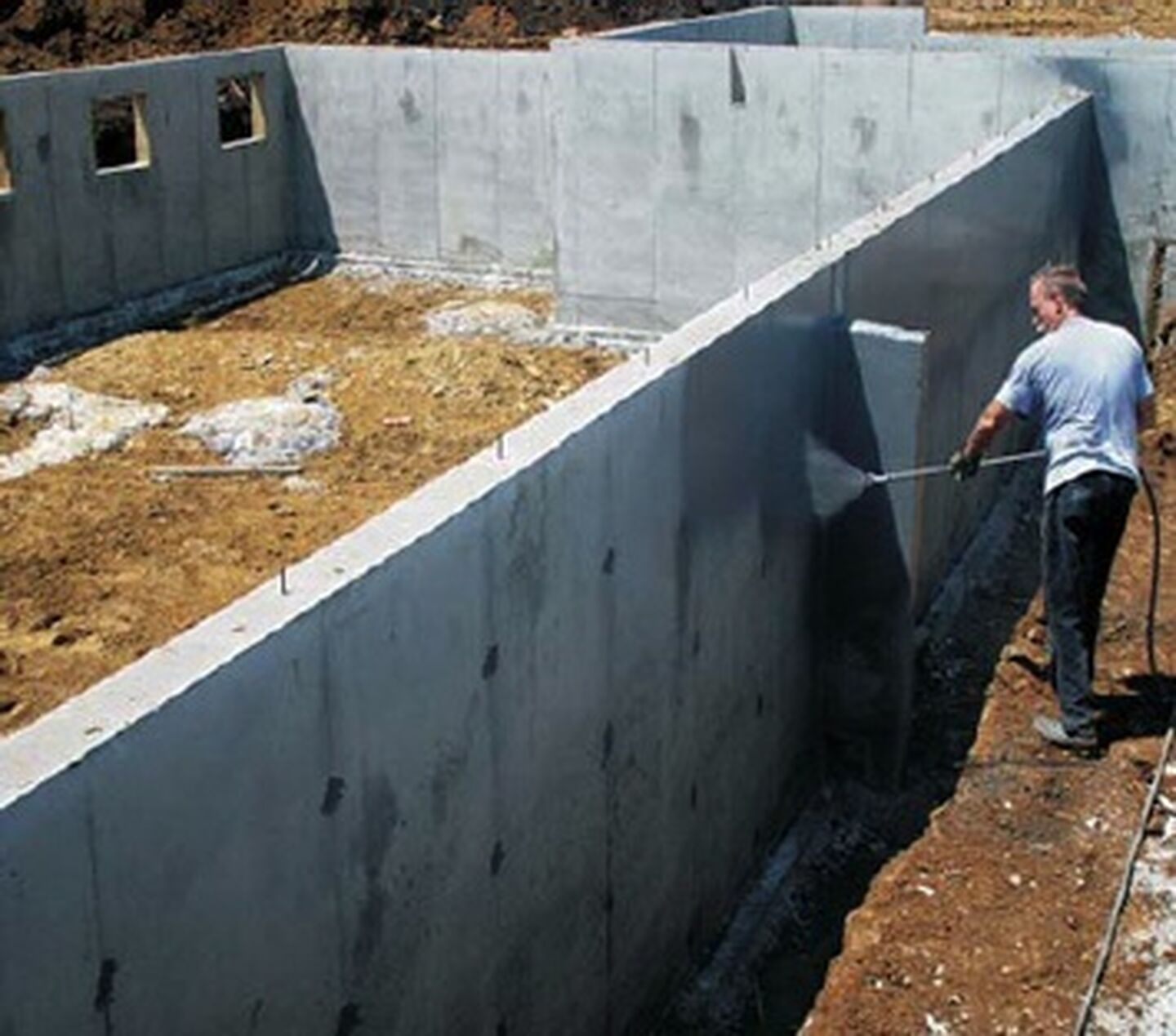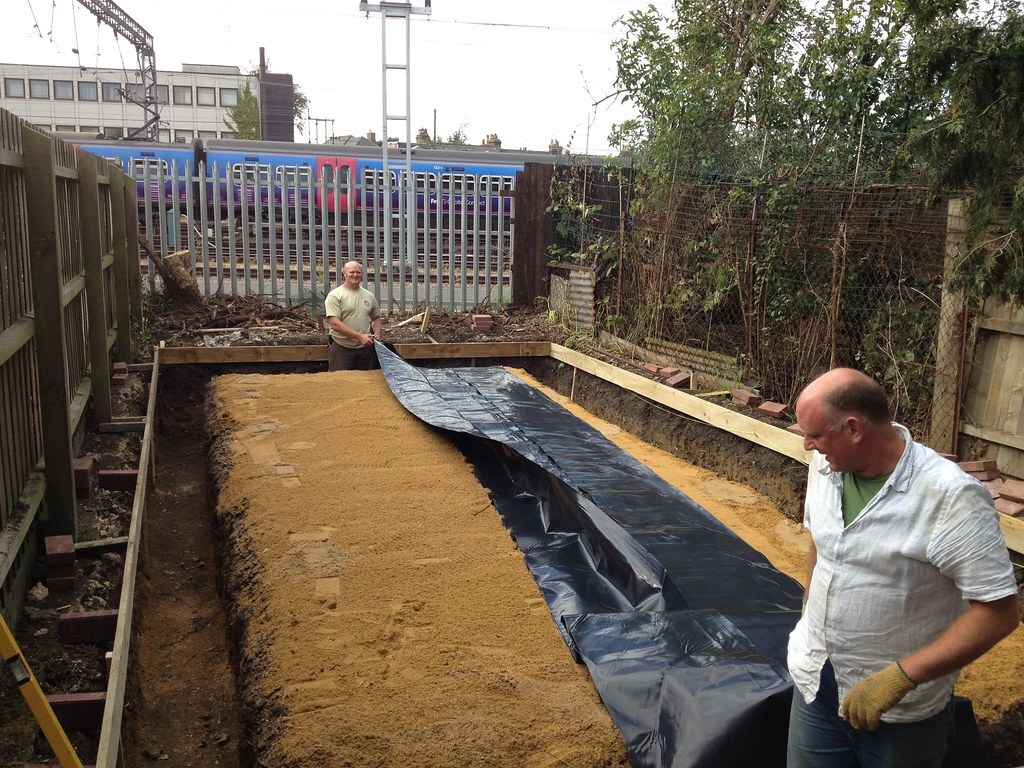Exploring the Various Techniques and Solutions for Effective Damp Proofing
Wetness in structures positions substantial challenges to both structural integrity and interior air high quality. Numerous techniques and solutions have emerged to combat this prevalent problem. From typical damp-proof membrane layers to innovative chemical therapies, each technique supplies distinct benefits. Recognizing these options is crucial for reliable moisture control. Nevertheless, picking the right remedy depends on particular structure conditions and demands, motivating additional exploration into the most reliable moist proofing techniques readily available.
Understanding the Reasons For Wetness
Although moisture can develop from numerous resources, understanding these causes is crucial for effective removal. Commonly, dampness stems from 3 main resources: climbing damp, penetrating damp, and condensation. Climbing damp happens when groundwater takes a trip up-wards through permeable products, such as block or stone, usually due to an absence of a reliable obstacle (mould removal newcastle). Penetrating damp is usually brought on by outside variables, consisting of roofing system leaks, faulty gutters, or damaged walls, enabling water to penetrate a residential property. Condensation, on the other hand, arises from excess wetness in the air, frequently exacerbated by poor air flow and temperature level differences, resulting in water beads basing on surface areas. Identifying these underlying issues is important, as each kind of moisture calls for a customized method for removal. Appropriate evaluation helps in establishing the most reliable options, inevitably guarding the architectural honesty of a building and improving indoor air high quality
Typical Damp-Proof Membranes

Chemical Damp-Proofing Solutions
Chemical damp-proofing options offer an ingenious method to preventing wetness invasion in structures. These approaches normally entail the application of liquid chemicals that permeate stonework and form a barrier versus rising damp. Commonly utilized chemicals consist of silanes, siloxanes, and other water-repellent representatives that react with surface materials to create a hydrophobic layer.The application procedure normally calls for boring holes right into the wall surfaces, infusing the chemical service, and permitting it to heal. This approach is especially advantageous for older frameworks where standard damp-proof membranes may be unwise. Chemical damp-proofing can be less disruptive and a lot more affordable than comprehensive improvement projects.While reliable, these options depend on correct application and environmental conditions for peak performance. damp specialist newcastle. Normal maintenance and surveillance are vital to assure the long life of the damp-proofing treatment. On the whole, chemical damp-proofing represents a functional option for safeguarding structures versus moisture-related damages
Cavity Wall Construction Methods
Dental caries wall building and construction strategies use countless advantages, especially in moisture control and power effectiveness. By including an air void in between 2 layers of masonry, these walls successfully reduce water access while boosting insulation. This combination not just shields frameworks from dampness yet also adds to lowered energy intake.
Benefits of Tooth Cavity Walls
When thinking about reliable wet proofing methods, the benefits of dental caries wall surfaces attract attention prominently. Cavity walls consist of 2 different layers, creating an air space that properly minimizes wetness penetration. This design minimizes the danger of dampness, as the external wall surface works as a barrier against rainfall and water access. In addition, dental caries wall surfaces boost thermal insulation, which adds to energy effectiveness by lowering warm loss. They additionally provide audio insulation, assisting to develop a quieter indoor setting. The air void allows for ventilation, which helps in wetness control and decreases the possibility of mold and mildew development. These advantages not only improve the general convenience of a building yet likewise add to its longevity and structural integrity.
Dampness Control Methods
Reliable dampness control methods are crucial in cavity wall building to ensure long-term defense versus moisture. One main method entails the consolidation of weep openings, which facilitate water drain from the cavity, preventing build-up. Furthermore, making use of breathable membrane layers can aid manage dampness levels while enabling entraped vapor to get away. Appropriate placement of insulation is additionally crucial, as it must not block drainage paths. Making certain that the outer fallen leaves of the dental caries wall surface are constructed with waterproof materials enhances overall longevity. Regular maintenance checks are essential to determine any kind of clogs or damages early, protecting the structure's stability. Ultimately, a mix of these methods creates a durable defense versus wetness invasion in tooth cavity walls.
Insulation and Energy Efficiency
Insulation plays an essential duty in improving power effectiveness within cavity wall surface building. By incorporating insulating materials, these walls develop a thermal obstacle that reduces warm loss and reduces energy intake. Effective insulation not just assists preserve a stable indoor temperature but additionally reduces the danger of moisture, as it protects against condensation within the wall surface dental caries. Various techniques, such as making use of inflexible foam boards or mineral wool, can be employed to achieve suitable insulation efficiency. Additionally, proper setup is important to guarantee that gaps and gaps are decreased, which can otherwise endanger energy effectiveness. Eventually, a well-insulated dental caries wall surface adds considerably to overall sustainability and lowers cooling and heating costs for house owners.
External Damp Proofing Approaches
Outside wet proofing methods are vital for protecting structures from wetness seepage. Two reliable techniques consist of the application of water resistant membranes and the installment of French drains pipes. These services help mitigate water buildup and protect the integrity of buildings.
Waterproof Membrane Layer Application
While numerous methods exist for get more info preventing wetness ingress, the application of water-proof membrane layers remains an extremely efficient external moist proofing technique. These membranes are commonly made from materials such as polyethylene, rubber, or customized asphalt, providing a durable obstacle against water penetration. The installation process includes using the membrane to the exterior surface areas of foundations or wall surfaces, making sure complete insurance coverage to stop leaks. Appropriate attachment and sealing at joints are important to taking full advantage of efficiency. Waterproof membrane layers can be used in various types, consisting of fluid coverings and sheet membrane layers, enabling versatility based on the specific needs of the structure. This method not only shields structures from wetness however likewise enhances their longevity and structural integrity.
French Drain Installation
One efficient approach for handling groundwater and protecting against dampness buildup around a building's structure is the setup of a French drain. This drainage system contains a trench full of crushed rock and a perforated pipe that reroutes surface water far from the structure. Appropriate installation requires careful preparation, making certain that the drain slopes away from the framework to assist in excellent water flow. In addition, the area of the drain is crucial; it must be placed in areas prone to pooling or excess dampness. Regular maintenance, including cleaning particles from the crushed rock and making sure the pipeline remains unblocked, is important for long-lasting efficiency. Ultimately, a well-installed French drainpipe can significantly minimize the danger of water-related problems in structures and cellars.
Interior Waterproofing Strategies
Interior waterproofing techniques are vital for safeguarding a building's inside from moisture infiltration and potential water damages. These methods usually involve the application of specialized materials and techniques developed to create a moisture barrier within the structure. One usual approach is making use of water resistant coatings or sealers on wall surfaces and floorings, which protect against moisture from penetrating surfaces.Additionally, setting up indoor water drainage systems, such as sump pumps, can successfully manage water accumulation in basements and crawl spaces. One more method involves making use of vapor obstacles, which are set up to hinder wetness movement from the ground right into living spaces.Moreover, resolving any kind of fractures or gaps in walls or structures with ideal sealants guarantees an extensive protection versus water intrusion. By executing these indoor waterproofing approaches, home owners can considerably decrease the risk of mold growth, architectural damages, and other moisture-related concerns. Correct implementation of these strategies is crucial for long-term protection and building integrity.
Normal Upkeep and Examination Practices
Regular upkeep and examination practices are crucial for guaranteeing the lasting effectiveness of damp proofing options in any type of building. Routine checks allow building owners to determine very early indications of moisture intrusion, such as peeling off paint, mold and mildew development, and mildewy smells. These indicators can signal underlying problems that call for instant attention.Inspections ought to be conducted at least each year, concentrating on vulnerable locations like basements, crawl areas, and outside walls. During these analyses, homeowner ought to analyze sealers, drain systems, and air flow to validate they function correctly.Additionally, maintaining downspouts and seamless gutters is essential, as clogged systems can cause water build-up near the structure. Executing a normal upkeep routine, along with timely repair services, can substantially extend the life expectancy of wet proofing steps and safeguard the architectural integrity of the building. Positive steps eventually contribute to the overall health and wellness of the living environment.
Regularly Asked Questions
For How Long Does Damp Proofing Generally Last?
The duration of damp proofing efficiency varies, generally lasting in between 20 to 50 years. Variables such as application top quality, environmental conditions, and upkeep techniques considerably influence the long life of the moist proofing treatment.

Can I Damp Proof My Home Myself?
The private considered the expediency of DIY damp proofing. With proper study and the best products, it is feasible. Nonetheless, they likewise recognized the significance of specialist assistance to guarantee lasting performance and prevent future concerns.
What Are the Indications of Inadequate Damp Proofing?
Signs of ineffective damp proofing include relentless moldy odors, visible mold and mildew growth, peeling off paint, moist patches on walls, and wood degeneration - damp proofing newcastle. Property owners ought to deal with these problems promptly to stop more damages and health and wellness problems
Does Damp Proofing Affect Indoor Air High Quality?

Exactly How Much Does Professional Damp Proofing Cost?
Professional damp proofing costs differ significantly, generally varying from $1,000 to $5,000 relying on the residential or commercial property's size, the extent of the moist concern, and chosen approaches. Each situation calls for a customized assessment for exact prices. Frequently, moisture originates from three key resources: rising moist, permeating damp, and condensation. When considering reliable wet proofing methods, the advantages of tooth cavity walls stand out plainly. Outside damp proofing methods are necessary for securing structures from wetness infiltration. While various techniques exist for preventing wetness ingress, the application of waterproof membrane layers remains a highly effective external wet proofing method. Indications of ineffective damp proofing include persistent moldy odors, visible mold and mildew development, peeling paint, damp patches on walls, and timber degeneration.